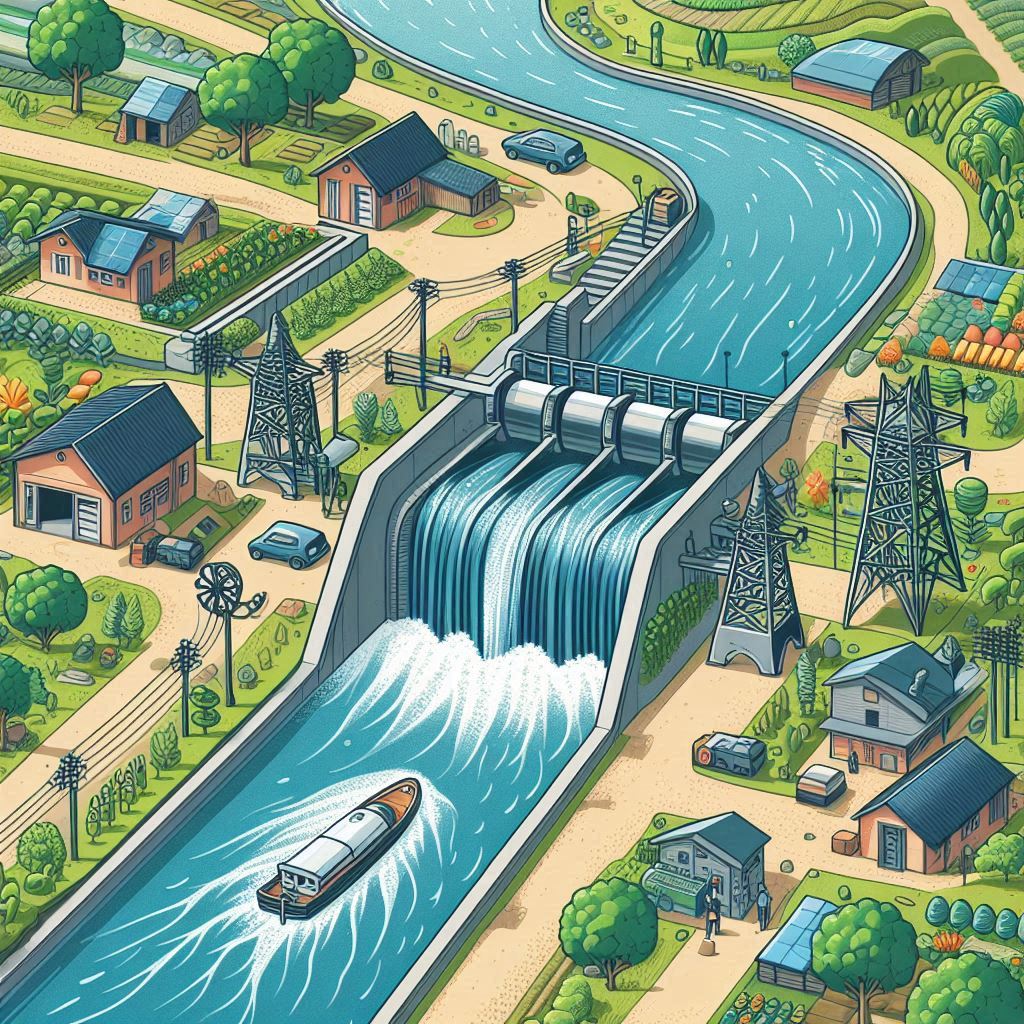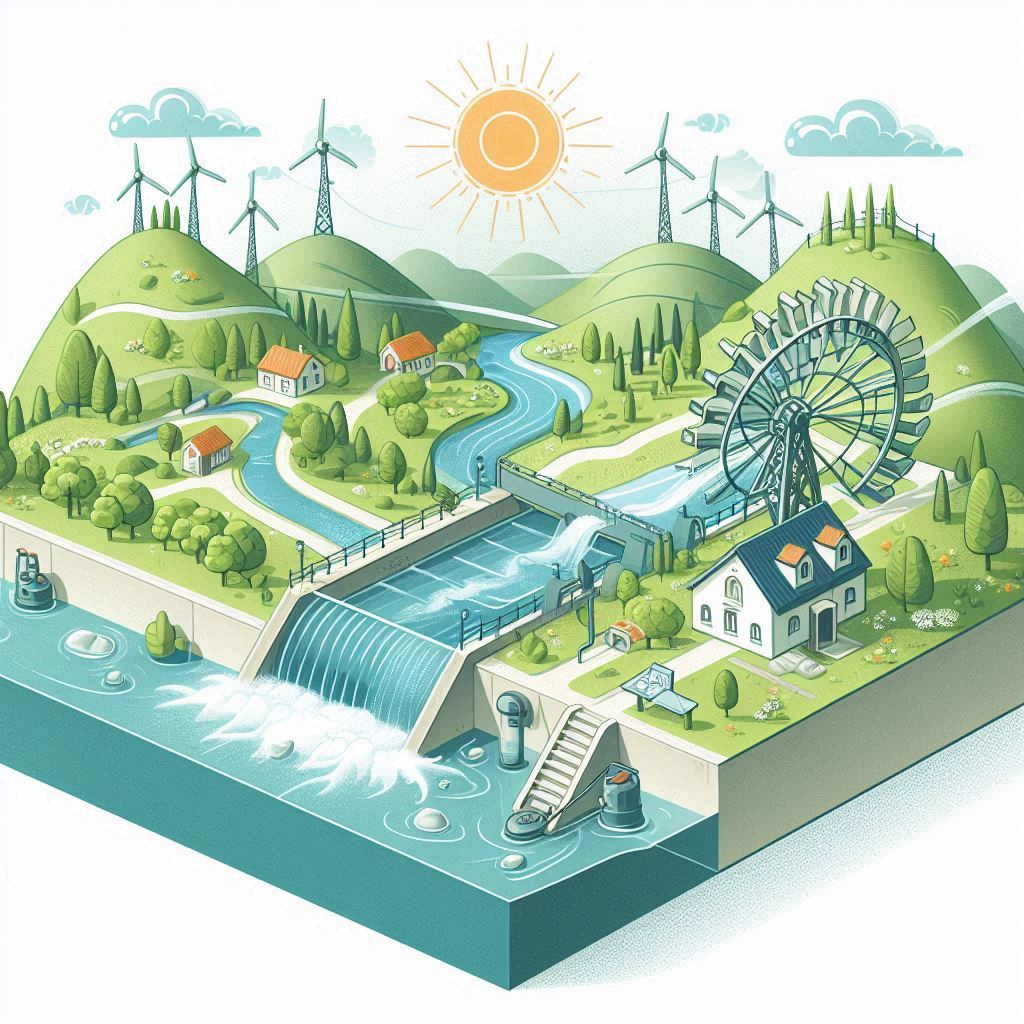Canal-based hydroelectric systems are emerging as a breakthrough solution, harnessing the power of the river to generate clean and sustainable electricity. These innovative systems utilise the natural flow of water in canals, offering a range of benefits that go beyond conventional hydroelectric methods.
Canal Hydropower: The Basics
Canal hydropower involves the installation of turbines in irrigation canals to harness the kinetic energy of flowing water. Unlike turbines in large dams, these are smaller and designed to work efficiently with water flows while maintaining the canal’s primary function of irrigation. This method offers a smart solution to power generation by integrating with existing infrastructure, reducing environmental impact, and utilizing water flows that would otherwise go unused for energy production.
Strategically placing turbines along irrigation canals, energy can be generated without the need to build new dams or disrupt natural waterways. Turbines are designed to operate efficiently at varying water speeds, ensuring consistent power generation throughout the seasons. In addition, canal hydropower projects can be implemented relatively quickly compared to traditional hydropower developments, making them an attractive option for expanding renewable energy capacity.
Canal hydropower has the potential to provide electricity to rural areas where irrigation canals are prevalent, contributing to local economic development and energy access. Canal hydropower represents a promising approach to sustainable energy generation that complements existing water management systems while mitigating environmental impacts.
The Mechanism Behind Waterway Turbines
The mechanism behind waterway turbines in canal hydropower is quite straightforward. As water flows through the canal, it encounters submerged turbines which it turns. This rotational movement of the turbine blades generates mechanical energy, subsequently converted into electricity by an attached generator. This method is clean and unobtrusive, avoiding many environmental concerns associated with traditional hydropower projects like dams, which often involve significant ecological and geological changes.
What distinguishes canal-based systems is their minimal need for infrastructure alterations. These setups don’t require extensive modifications to the canal itself; instead, they integrate seamlessly into the existing structure. This feature makes them particularly suitable for regions with established irrigation canal networks.
The Promise of Decentralized Hydropower
Decentralized hydropower, like that provided by canal systems, marks a significant departure from the centralized power generation model. These systems reduce transmission losses and dependency on the main grid. This aspect is particularly crucial for rural electrification, where remote communities might not have reliable access to the national grid. Decentralized systems empower these communities, offering them a stable and renewable source of energy, which, in turn, can catalyze other socio-economic benefits such as enhanced educational opportunities, better health care, and increased economic activities.
Decentralized models promote energy resilience. Communities are less vulnerable to disruptions, be it from natural disasters or systemic failures. In the era of climate change, such resilience cannot be overstated.
Canal-Based Renewable Energy
Irrigation canals are particularly prevalent in agrarian societies, where they play a key role in supporting agriculture. Installing turbines in these canals can therefore provide a dual benefit – continuing to support agriculture while generating the electricity needed for rural electrification. This approach can be a cornerstone of sustainable rural development, providing a cleaner alternative to diesel generators or unreliable grid power, reducing carbon emissions and improving the quality of life for rural communities.
The Challenges and Road Ahead
While the benefits are significant, the path to widespread adoption of canal-based hydropower is not without its challenges. First and foremost is the need for initial capital investment and technological support. These projects, although cheaper than large-scale hydropower plants, still require significant upfront costs for turbine installation and grid connectivity. The success of canal-based systems hinges on the availability of consistent water flow, which can be a challenge in regions prone to seasonal fluctuations in water availability.
Another consideration is the maintenance of these systems. Ensuring the turbines do not obstruct the canal or impede its primary function of water delivery for irrigation requires ongoing oversight and occasional intervention.
Despite these challenges, the potential of canal-based hydropower as a sustainable energy solution, especially for rural electrification, is immense. While technology advances and investment in green energy increases, this innovative method of harnessing the power of water is set to play a crucial role in our global shift towards renewable energy.
Engaging Communities in Sustainable Energy Generation
The heart of this transition is the empowerment of local communities. Involving local people in the planning, implementation, and maintenance of these systems not only increases the success of the projects but also fosters a sense of ownership and pride in contributing to a sustainable future. Education on the benefits of renewable energy and training in system maintenance can further ensure the long-term viability of canal-based hydropower initiatives.
A Greener Tomorrow
Utilizing existing irrigation infrastructure and taking a decentralized approach, we can light up rural areas while respecting our planet. It’s about reimagining our waterways as conduits for power – power that’s green, accessible, and decentralized, making a difference in the lives of people in rural communities and beyond.
Harnessing the gentle, yet persistent flow of water in our canals for electricity presents a vision of energy generation that is as harmonious with nature as it is beneficial to society. With each turbine installed, we’re not just generating power; we’re sowing the seeds for a resilient, empowered, and sustainable future.


